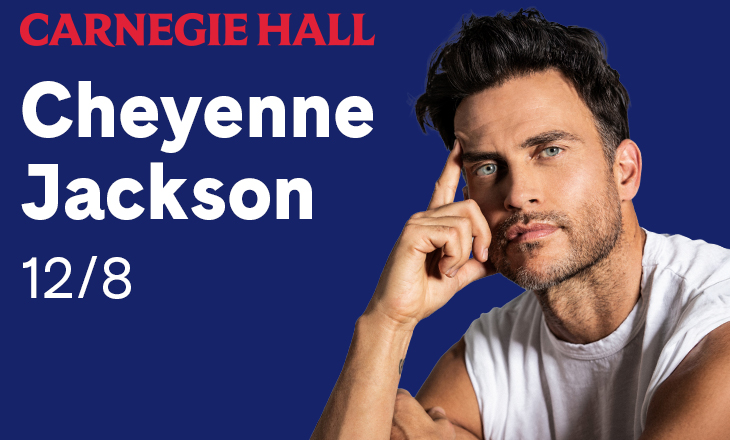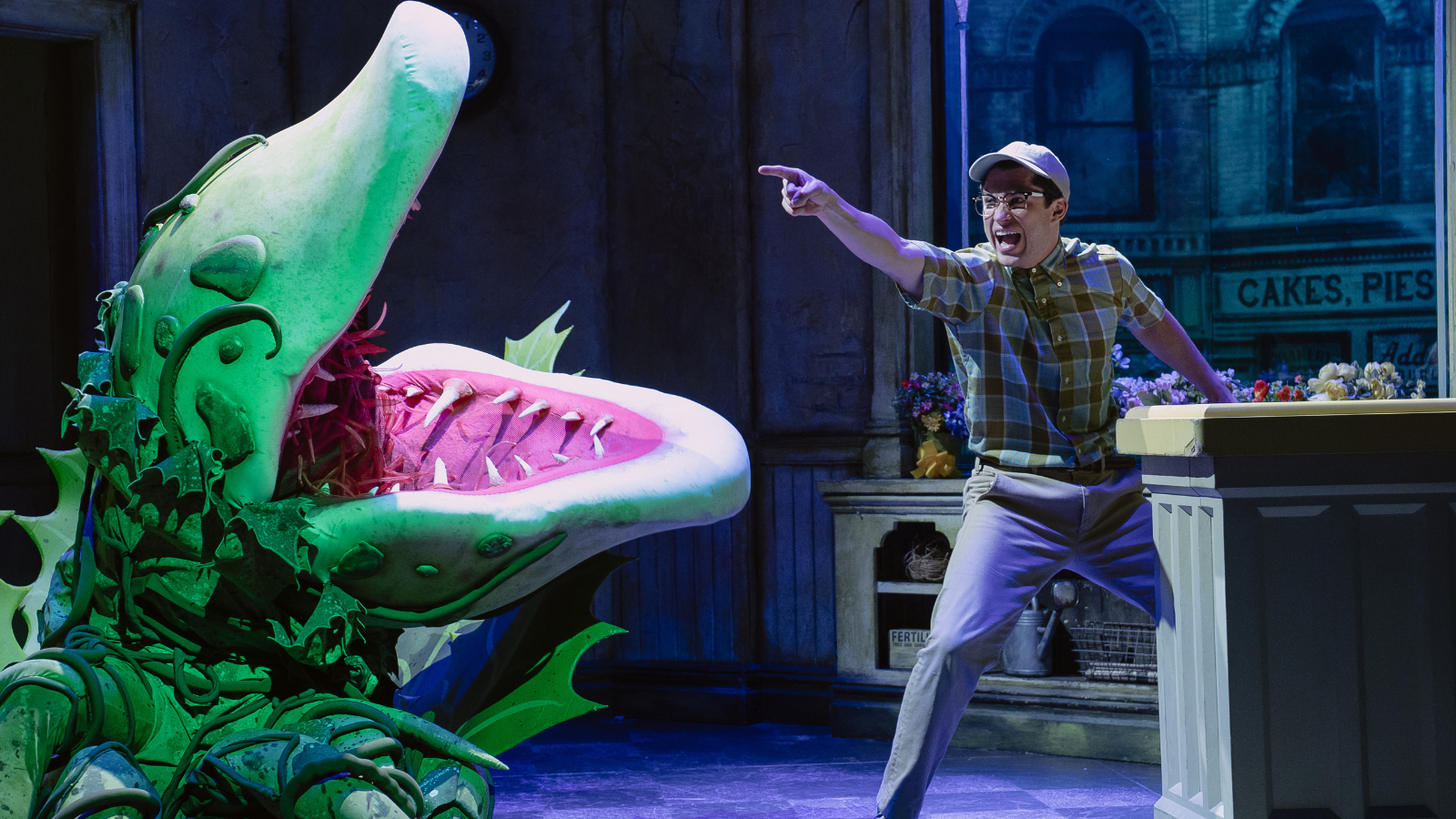Graham Phillips Just Wants To Do The Work
It has become something of an annual Theatrely tradition to sit down with the lovely, very talented Graham Phillips to discuss not only the versatile actor/director’s latest project, but also all things life, art and process. Back in 2022 we spoke with Phillips about Who’s Afraid of Virginia Woolf? at Geffen Playhouse; then in 2023, it was Sunday in the Park With George at Pasadena Playhouse, with Phillips taking on the role of Georges Seurat.
Okay, we missed a year. But now, Phillips is back on a New York stage for the first time in 17 years, joining the off-Broadway smash hit Little Shop of Horrors as its newest Seymour Krelborn. Phillips is reunited with Elizabeth Gillies, who returns to the role of Audrey for an encore run, over a decade after the two made their Broadway debuts together in 13: The Musical.
Phillips spoke with Theatrely about moving back to the East Coast, the parallels he found between Little Shop and Shakespeare’s Hamlet, and why his Seymour is a bumblebee.
In your last conversation with Theatrely, in 2023, you spoke aloud a desire to come back to New York.
You can trace Little Shop back to my setting that intention of being back in New York. This city is where I planted all these seeds of love for being on stage. The sense of community, the heart-opening experience of doing theater. I had all these positive associations with New York. But even though I went to school out here and did The Good Wife out here, I still always thought of myself as a California guy. And then last winter I just realized: ”No I’m not.” So I plopped my butt down here in March.
You also mentioned, in the same chat, that you nearly got the role of Marty McFly in Back to the Future on Broadway. Now that you’re here, is the goal still to land a lead role in a Broadway musical?
Before I was here, that was my mentality. But you end up having two auditions a year for big roles. I’m also not at the level of recognizability or acclaim where it’s like, “Oh well, if Graham Phillips wants it, let’s give it to him.” It's been too long since I’ve been in the New York scene, so any sense of entitlement doesn’t help with that core desire to get back on stage doing good work with good people.
Your introduction to New York was leading a Broadway show right off the bat, so that would tend to skew one’s expectations a bit.
It sets a weird, untenable expectation. But I’ve also always felt isolated from the theater world. Even coming into 13: The Musical, because everyone had done more work than I had. It was Eamon [Foley]’s like, seventh Broadway show or something! And it was my debut. [editor’s note: it was Foley’s fifth Broadway show - not bad for 14 years old.]
Being here, it becomes just about being involved. Helping people out by sitting in their living room and working through a script. That’s been really healing for me to not feel like such an outsider anymore. I don’t care if it’s a reading, or off-off Broadway, or whatever—I just want to be generative and creative. Kinda like George in act one of Sunday. I don’t care what my chromolume looks like. I just want to do the work.
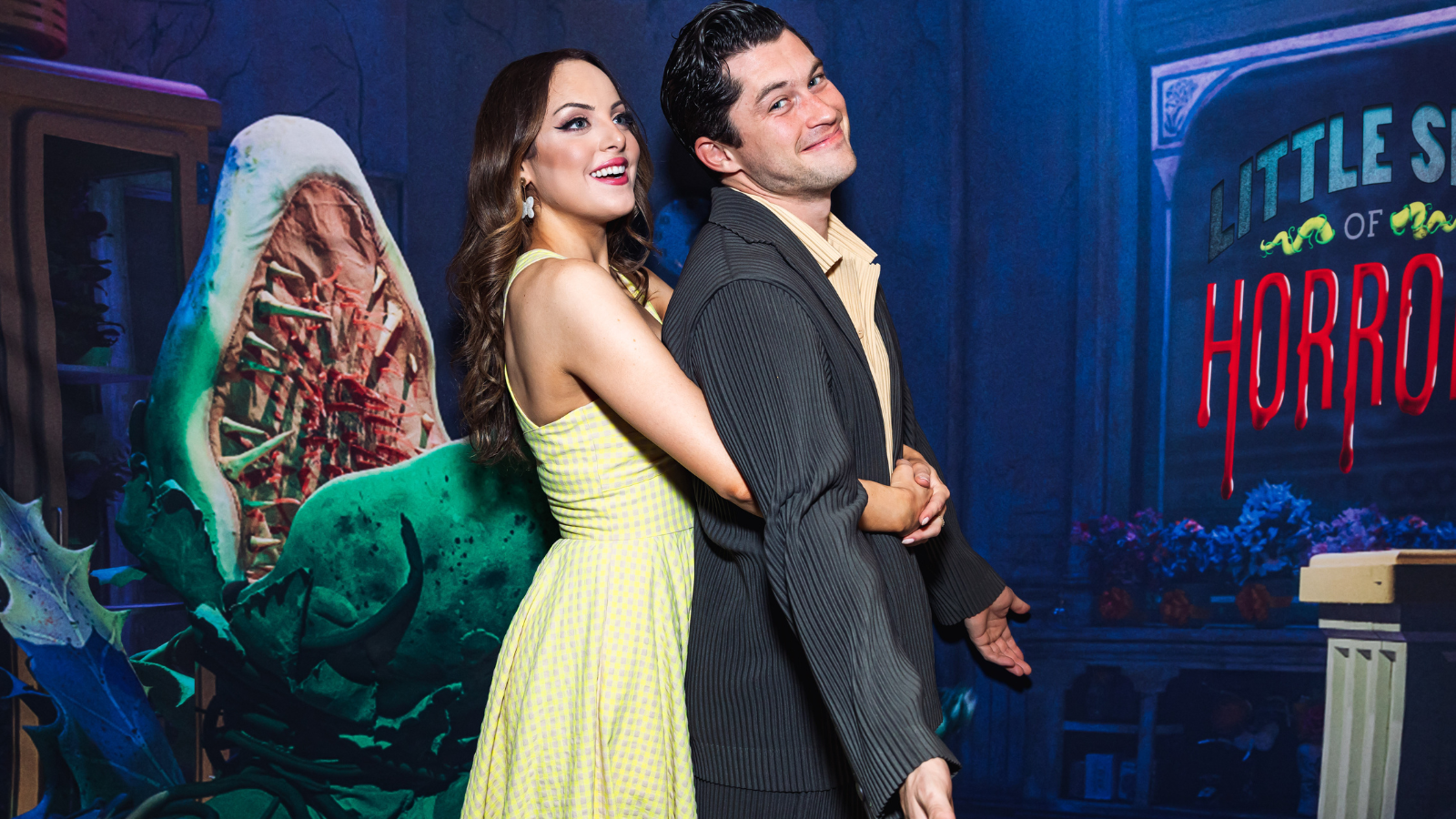
And then how did Little Shop come along?
I was hanging out at Liz’s house two weeks before she closed with Milo [Manheim], and Eamon was there, and she was like, “They want me to extend, but I don’t know—who the hell is gonna do Seymour?” I left the room, and Eamon was like, “Hello… Graham?” Liz was like, “Oh interesting, do you think he’d do it?” And Eamon went, ‘If you tell him to do it, he’ll do it.”
What’s that rehearsal process like when you’re the only new element going into a long-running show?
I had three weeks to learn it and put it up. I didn't want to let Liz down, so I worked really hard. And I wasn’t that familiar with the material. To enter a show that’s such a well-oiled machine, and my progression in rehearsal is the only threshold for whether we move forward or not…that was really trippy.
You really didn’t know the show at all?
I just didn’t know it that well! I’d sung “Suddenly, Seymour” at karaoke.
So when you’re picking up Little Shop almost like it’s a new script, what do you immediately latch onto with Seymour?
Realizing that the plant is not this separate entity, it’s a part of Seymour, really helped me to give him dimensionality. I love the psychology of his “shadow,” or you could even say his addiction. This hidden part of his mind that he doesn’t want to look at, manifested as a giant figure on the stage.
I was just working on Hamlet in a scene work class, and I realized this is the opposite story of Hamlet. Prince Hamlet is coming from a place of great privilege and having all this external validation, but as he tries to get in touch with a sense of inner integrity, his external world falls apart. And Little Shop is the exact opposite. Seymour is in extreme poverty, he’s an orphan, he has no support system—but little by little, he betrays his sense of integrity, and his external world blossoms because of it.
Your Seymour, far more than with other actors I’ve seen in this production, really feels like the author of his own fate. I actually wondered: “Oh, is Seymour the villain of this story?” For you, when Seymour commits all these awful acts and betrays his own integrity, as you put it, does that come from an inability to get past some deep rooted self-hatred?
I think it’s the addiction to relief. Relief from, yes, his self-hatred, from the shame of having never been lovable and of having to hyper-accomodate everyone around him. Not feeling like he can really own the space that his body takes up, so he has to contort himself to be smaller.
Suddenly he doesn’t have to do that. And that very physical feeling of pressure pushing him inward, it explodes outward. He has no energetic boundary keeping him small anymore, because people are adoring him, and telling him he’s smart, and he’s coming into money, and he’s getting validation, and he’s getting physical affirmation. He’s hitting all the love languages.
To be free of that pain, I think it’s a drug. I mean, that’s another way of looking at the plant. You could look at Audrey II broadly as capitalism, or any sort of system that runs on oppression—but also, it’s just addiction itself.
As far as you realizing a more villainous Seymour, I will say that I didn’t want him to be too naive. I wanted him to have agency in what his decisions are. It’s easy to look at it and go, “Oh he’s a pinball, being knocked around by circumstances.” But this goes back to his relationship with the plant. In “Feed Me,” at first he’s shocked by this discovery of a shadow self. But by the end of the number, they’re singing together and it’s this fusion of, “Oh, we’re the same, we’re the same person.”
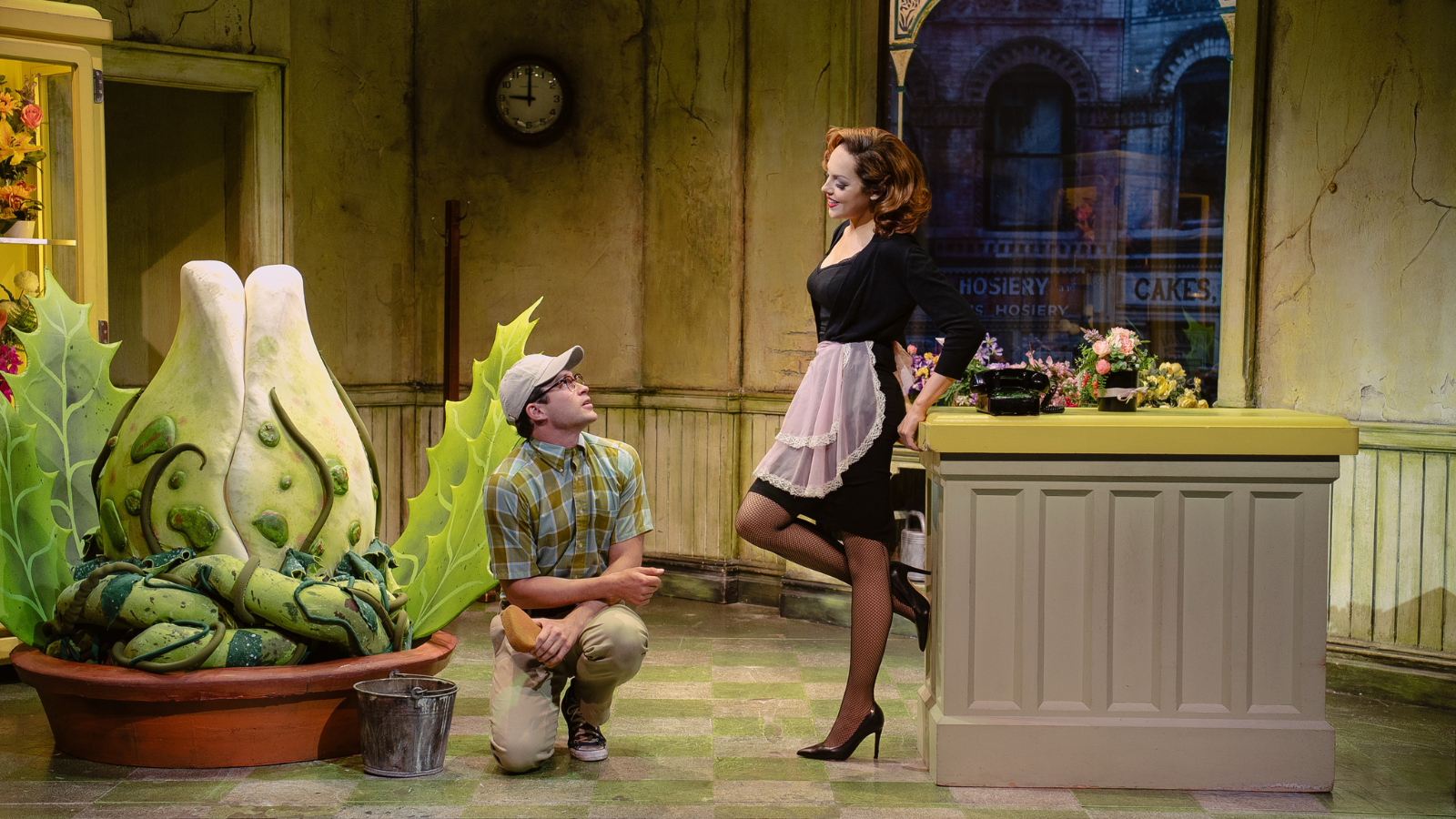
What has it been like working with Liz again? Obviously, since getting you in the role was her idea, you’ve kept up and stayed close all these years.
I’m curious how the chemistry reads because our relationship is so sibling-like, to the point where we kept putting off doing the kiss. They kept saying, “Guys, we should work through the kiss.” We didn’t even do it for the put-in rehearsal or the final dress. It was like, “We’re gonna do this only the exact amount of times that we have to.”
You have to really go for it though, it’s important. They are horny for each other.
That’s so much of the engine of the show, his obsession with Audrey. I do animal work with characters, so one night I went to bed and asked myself for a dream. I was like, “‘What would be a good animal to work with for Seymour?” And I had dreams of bumblebees. The hive, and that whole relationship to the queen bee, the idea that they can kill, they can use their stinger, but once they do that, that’s it for them.
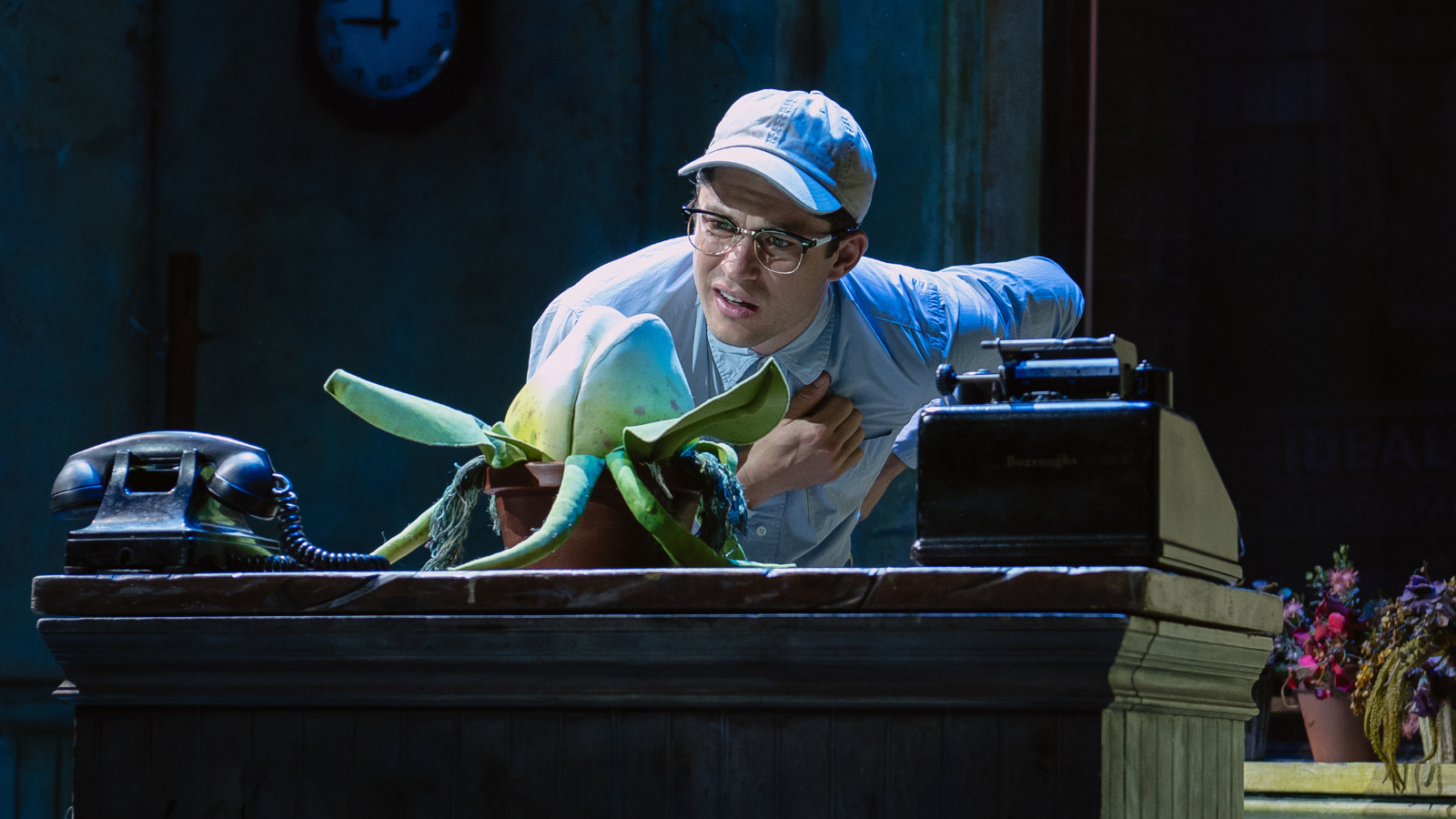
Right, then they’re dead.
The second the dentist dies, the rest of the show is just Seymour’s descent, his slow death once that first decision was made.
Also, bees see multiple of everything, so there’s a couple of times when Seymour is going through a door and I’m like, ‘Oh that’s not the door,’ or someone will point to something and I won’t quite see it. [laughs] No-one will pick up on any of this shit, but it makes me laugh.
So what’s next for you?
I’ve loved getting back into the groove of doing theater. As a free spirit but also someone who needs that architecture, theater is the perfect amount of structure. I know what time I need to show up, I know what generally needs to happen, but I get freedom to play within that. We’ll see what happens this year, but this has been, so far, a really affirming experience. It was a good move to come back to New York and get back into the theater market.







